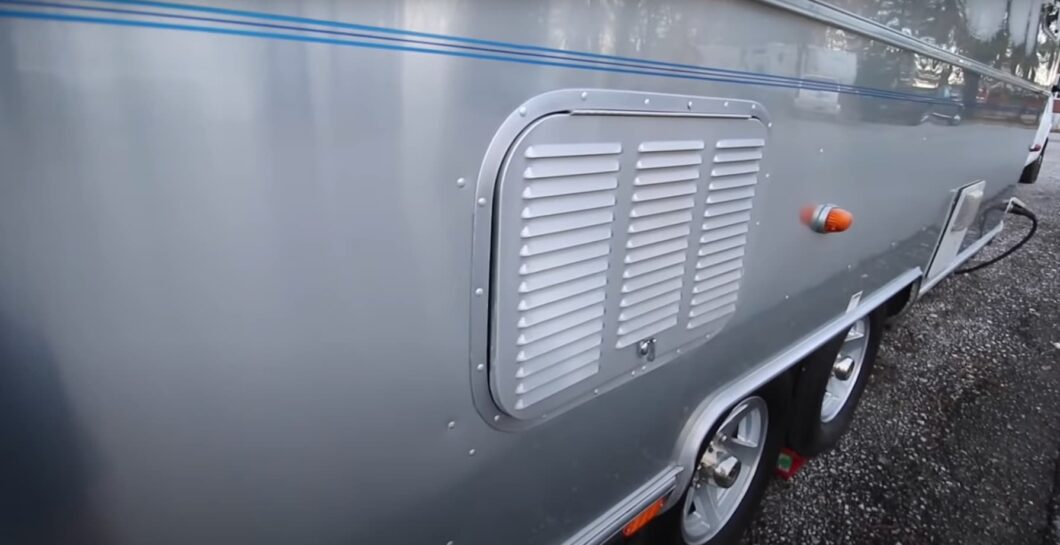Towing methods can differ depending on the weight or size of the motorhome. Another thing to think about when towing a motorhome is the nature of the damage it has incurred. When towing a large RV, special care must be taken because they are so big. There are many different types of motorhomes in existence, and each has its own set of rules when towing it. Before towing any type of RV, always consult the owner’s manual to see what the specific requirements are. It’s also important to make sure that your RV has the best tires possible for the type of driving you’ll be doing. Check out some of the best RV tires available on the market.
If you are wondering how to tow an RV with a truck, you have come to the right place. In this blog post, we will walk you through the process step-by-step so that you can feel confident in your ability to tow your RV. We will also provide some tips on how to make the process go as smoothly as possible. So, whether you are a first-time RV owner or just need a refresher course, read on for all the information you need!
How to Tow an RV
Understand Tow Capacity and RV Trailer Weight
A vehicle’s towing capacity is the maximum weight it may tow. The towing capacity of a truck is mostly determined by its axle ratings and whether or not it has front or rear axles. Because most sedans and smaller cars don’t have towing capabilities, this generally refers to SUVs and trucks.
Since no two vehicles are identical, knowing your vehicle’s exact ratings is important. On the driver’s side doorframe, you should be able to find these numbers. These figures may be difficult to spot, but they impact what sort of trailer you can tow safely. If you need more information on cars and driving, check out the CarProfy blog.
Your RV trailer’s weight is also important to consider. Most RVs contain several sleeping quarters, a bathroom, kitchen, and other amenities that add up quickly. The average weight of an RV is around 15,000 pounds (or about seven and a half metric tons). Of course, there are smaller trailers that weigh much less. But if you’re considering purchasing an RV or already own one, it’s important to remember how much extra weight you’ll be carrying with you on the road.
Weight is another important consideration. If your trailer is too heavy for your tow vehicle, the stopping distance and potential damage to your tow vehicle or RV are greater.
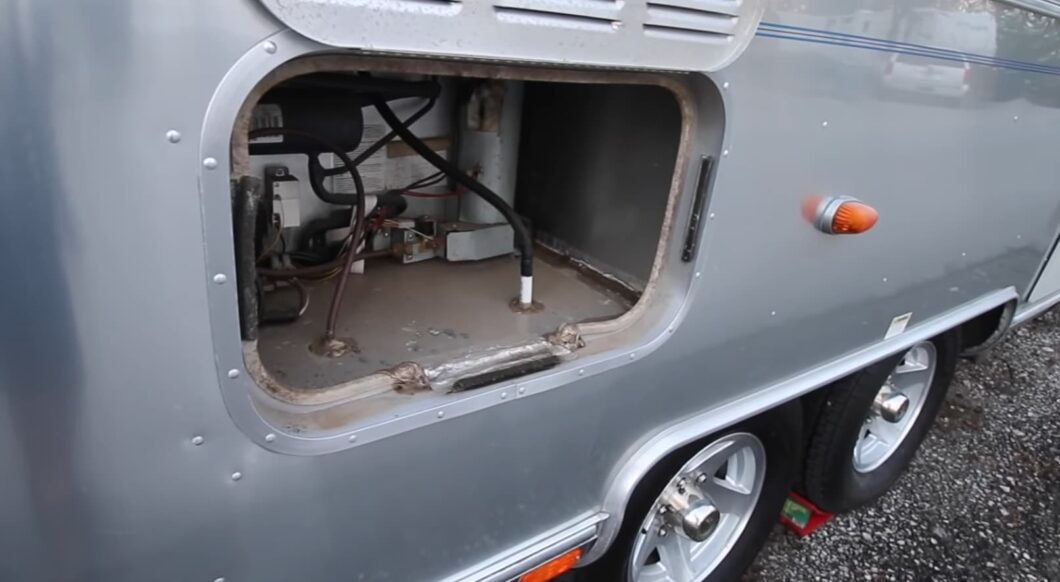
Pack Your Trailer Properly
When you’re towing an RV, how you pack your trailer is just as important as the towing vehicle itself. Overloading one side of the trailer can result in a dangerous situation called “trailer sway.” This occurs when wind or uneven pavement causes the trailer to start moving from side to side. If this happens, it’s important to remain calm and avoid making any sudden movements. Instead, gently apply the brakes and pull over to the side of the road when it’s safe to do so.
To avoid trailer sway, make sure that your trailer is properly balanced. That means distributing the weight evenly between both sides of the trailer. You should also avoid packing anything too heavy in the front or back of the trailer. And if you’re carrying any loose items, be sure to secure them so they don’t shift while you’re driving.
Learn How to Hitch Your Trailer Correctly
Hitching your trailer properly is critical for both your safety and the safety of others on the road.
There are three main types of hitches – weight-distributing, gooseneck, and fifth-wheel.
The type of hitch you’ll need depends on the weight of your trailer and the towing vehicle.
Most RVs can be towed with a weight-distributing hitch. This type of hitch uses springs to distribute the trailer’s weight evenly across the tow vehicle. It’s important to note that not all trailers can be towed with a weight-distributing hitch. If your trailer is too heavy, you’ll need a gooseneck or fifth-wheel hitch instead.
No matter what type of hitch you’re using, be sure to read the instructions carefully before attempting to attach it to your RV. And if you’re ever unsure, don’t hesitate to ask for help from a professional.
Always Do a Pre-Trip Walk-Around
Before heading out on the open road, it’s important to do a pre-trip walk-around of both your tow vehicle and RV. This will help you identify any potential problems that could occur while you’re driving.
Start by checking the tires on both your tow vehicle and RV. Make sure they’re properly inflated and that there’s no visible damage.
Next, check the brakes and brake lights on both the tow vehicle and trailer. If everything looks good, hop inside the RV and make sure all cabinets are securely closed and nothing is loose or out of place.
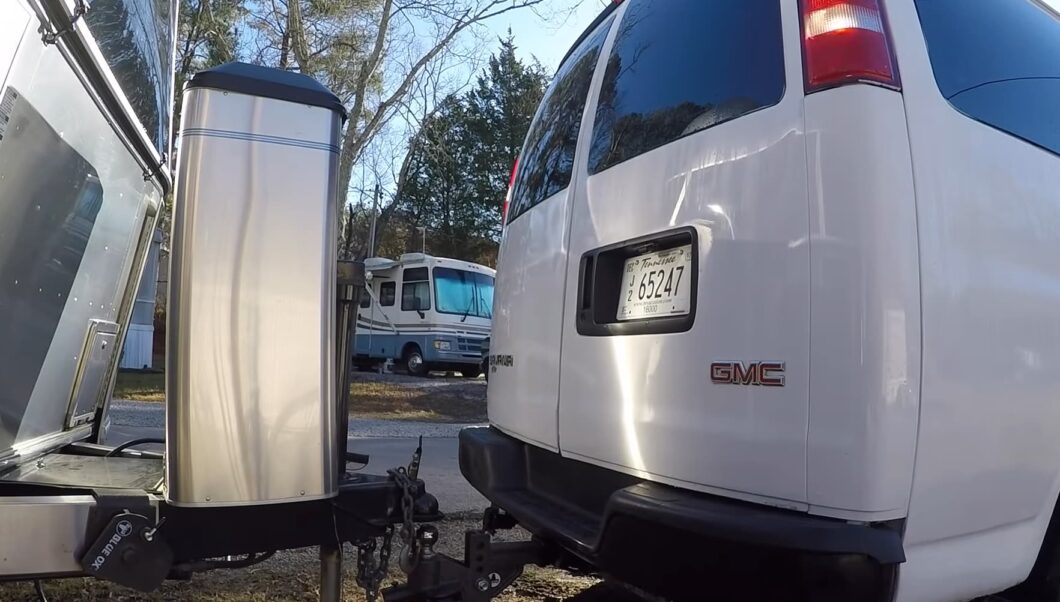
Know Your Specs
As we mentioned earlier, it’s important to know the exact specifications of both your tow vehicle and RV. This includes things like the vehicle’s weight limit, tongue weight limit, and maximum trailer length. All of this information can be found in your owner’s manual.
It’s also a good idea to familiarize yourself with the different parts of your tow vehicle and RV. This way, you’ll know what everything does and how to properly use it. For example, most RVs have an emergency brake that needs to be engaged when the RV is parked.
There are also usually two different types of lights on an RV: running lights and brake lights. The running lights stay on at all times while the brake lights only come on when you hit the brakes.
Know Your Route
Before setting out on your road trip, it’s important to know your route. This includes things like the steepest grades, sharpest turns, and lowest bridges. It’s also a good idea to map out where you’ll be staying each night. That way, you can plan your route accordingly and make sure you’re not driving too long each day.
When Towing, Drive Slowly and Keep Your Distance
When towing an RV, it’s important to take things slow. This means obeying the speed limit and leaving plenty of space between you and the car in front of you. Remember, it takes longer to stop a tow vehicle and trailer than it does a regular car. So give yourself plenty of time to brake.
It’s also a good idea to avoid making any sudden lane changes or turns. If you need to change lanes, make sure you signal well in advance and check your mirrors before making the move. When making turns, start wide and then turn into the lane gradually. And always use your turn signals!
Watch for Sway
One of the most dangerous things that can happen while towing an RV is trailer sway. This occurs when the trailer starts to swing back and forth behind the tow vehicle. It can be caused by a number of things, including wind gusts, uneven pavement, or even a passing semi-truck.
If you start to feel your trailer swaying, don’t panic. The first thing you should do is take your foot off the gas pedal and slow down gradually. Then grip the steering wheel tightly with both hands and steer in the direction you want the trailer to go. If this doesn’t work, you can try lightly tapping on the brakes. But be careful not to hit them too hard or you could cause an accident.
The Longer the Trailer, the Wider the Turn
When towing an RV, it’s important to remember that the longer the trailer, the wider the turn. This means you’ll need to start your turn earlier than you would if you were driving a regular car. It also means you’ll need to use more of the road. So be sure to check for oncoming traffic before making any turns.
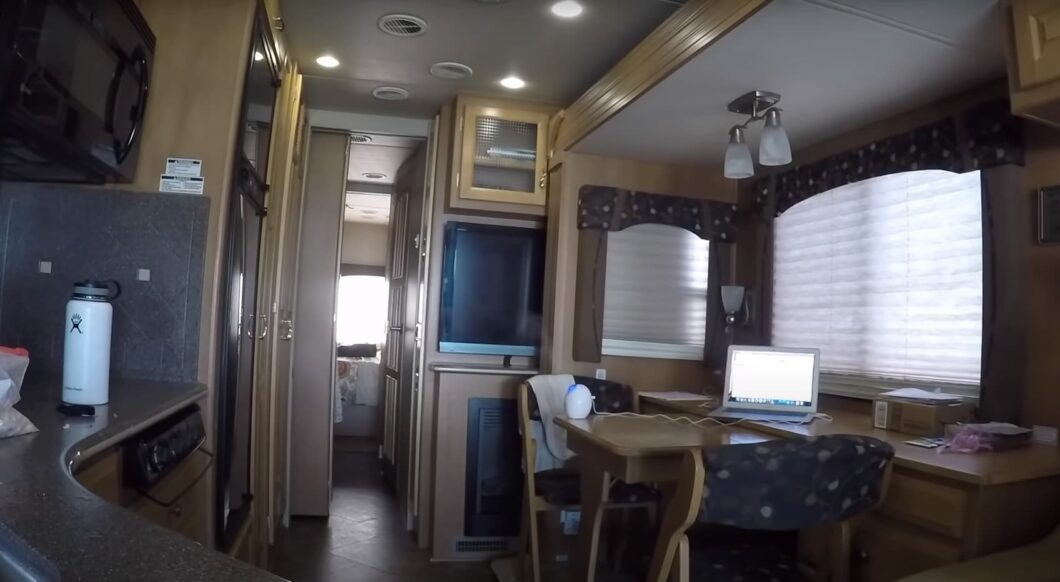
Braking While Towing an RV
When towing an RV, it’s important to remember that you’ll need more time and space to stop than you would if you were driving a regular car. This is because the trailer will take longer to stop than the tow vehicle. So always leave plenty of space between you and the car in front of you. And be sure to give yourself plenty of time to brake when approaching intersections or stop signs.
If you need to make a sudden stop, avoid hitting the brakes too hard. This could cause the tow vehicle and trailer to jackknife. Instead, gently tap on the brakes with your right foot while simultaneously depressing the clutch pedal with your left foot. This will help keep the trailer from swinging out behind you.
Tips On How to Tow a Broken Motorhome
Towing a Class A Motorhome
The chassis of a Class A motorhome is the same as that of a big truck or bus, with some reaching nearly 45 feet long! When towing a motorhome this large, you’ll need a vehicle with adequate torque and towing capacity. To ensure your car is suitable for the task, we recommend weighing it on an electrical scale.
The weight of a Class A motorhome ranges from 16,000 to 30,000 pounds. Because Class A motorhomes are so hefty, the vehicle pulling the vessel must be able to distribute the weight equally.
If your vehicle can tow and has been weighed, experts recommend getting a towing system with an electric brake already installed for maximum security. Look for a towing system that works with both your Class A motorhome and the vehicle you plan on towing it with. For towing a Class A motorhome, use a flatbed trailer.
Before transporting your towed Class A, make sure to check for any damage and that the wench is in place and evenly balanced. Most Class A trucks use electronic loading technologies. Nevertheless, before driving your towed Class A, you must ensure that the wench is in position and that all weight is evenly distributed.
Towing a Class B Motorhome
Class B motorhomes are the smallest of the bunch and typically don’t exceed 20 feet in length. Because they’re smaller, Class B motorhomes can be pulled by a wider variety of vehicles—even some SUVs!
When towing a Class B motorhome, you’ll need to use a weight-distributing hitch. This type of hitch helps to distribute the weight of the vessel more evenly between your vehicle and the trailer.
For example, if your Class B motorhome weighs 12,000 pounds, then using a weight-distributing hitch will help to spread that weight out so that your vehicle isn’t bearing the entire brunt.
It is also recommended to get a tow system with an electric brake for extra safety. Make sure that the towing system you choose is compatible with both your Class B motorhome and the vehicle you’ll be using to tow it. For Class B motorhomes, we recommend using a flatbed trailer.
As with towing a Class A motorhome, check for any damage before driving and ensure that the wench is in place and balanced.
Because Class B motorhomes are smaller, they typically use manual loading technologies. Even so, it’s important to make sure that all weight is distributed evenly before setting out on the road.
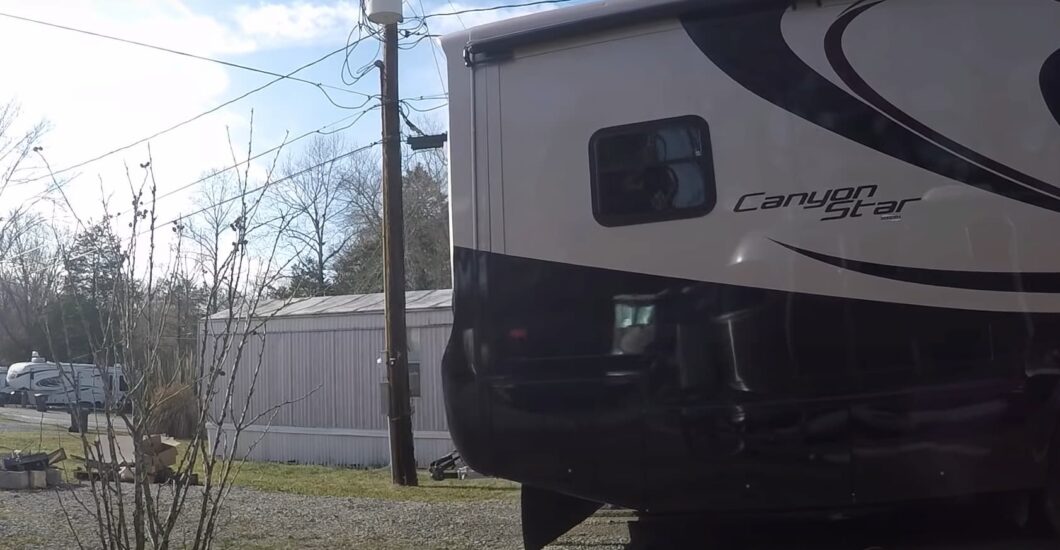
Towing a Class C Motorhome
Class C motorhomes are constructed on a cab or cutaway chassis and positioned between Class A and Class B motorhomes in terms of size. The typical weight of a Class C motorhome is around 10,000 to 12,000 pounds.
If you’re towing a motorhome with a separate living area, you’ll need to know how much capacity your trailer has. The majority of motorhomes are less difficult to drive than a Class B and are generally closer in design to Class A owing to the fact that they include connected sleeping quarters. When it comes time to pull a Class C, make sure your car can tow between 10,000 and 12,000 pounds without fail.
For motorhomes with Class B and C classifications, a tow dolly connected to a full-size truck should suffice. It’s critical to have a 700 to 800-pound buffer between the front and rear of the motorhome when using a tow dolly. To get the most out of your trip, make sure the ball height is between 16 and 18 inches.
When loading your motorhome onto the tow dolly, make sure it’s facing forward and the tires are properly secured. Check your tires every 20-30 miles to ensure they are properly secured. Just as with towing a Class A or B, be sure that the tow dolly and motorhome are in good alignment before departing.
FAQ
How much does it cost to tow a motorhome?
Expect to pay anything from $135 to $150 an hour to tow your RV. This includes the cost of gas, the truck, and the driver. If you need to tow your RV for a long distance, you may be charged an additional fee. Of course, if you have a friend with a truck who is willing to help you out, the cost will be much less. But if you’re going to hire a professional, expect to pay around $150 an hour.
What’s the best truck for towing – a travel trailer or fifth wheel?
There are a number of factors to consider when deciding which type of truck is best for towing your RV. The size and weight of your RV, the terrain you’ll be driving on, and your personal preference all play a role in choosing the right truck for the job.
If you’re unsure about which type of truck is best for towing your RV, consult with a professional or rental company before making your purchase. With the right truck, you’ll be able to enjoy many years of trouble-free camping adventures.
Can you tow a motorhome with a pickup truck?
Using a tow dolly attached to a full-size truck should suffice for Class B and Class C motorhomes.
It’s critical to have a 700 to 800-pound buffer between the motorhome’s front and rear.
To get the most out of your hauling, make sure the ball height is between 16 and 18 inches.
If you’re towing a fifth wheel, you’ll need a larger truck. The best trucks for towing fifth wheels are three-quarter-ton and one-ton dual axle diesel pickups. These trucks have the power and torque necessary to handle the weight of a fully loaded RV.
Can I tow a motorhome with a tow bar?
The short answer is yes, you can tow a motorhome with a tow bar. But there are a few things you need to know before you hit the road.
First, check your truck’s owner’s manual. Some trucks have a lower towing capacity than others and you’ll want to make sure your truck can handle the weight of your RV. You should also be aware of any special towing equipment that might be required for your particular truck.
Once you’ve checked your manual and gathered any necessary equipment, it’s time to hit the road! Just remember to drive carefully and always use caution when changing lanes or passing other vehicles.
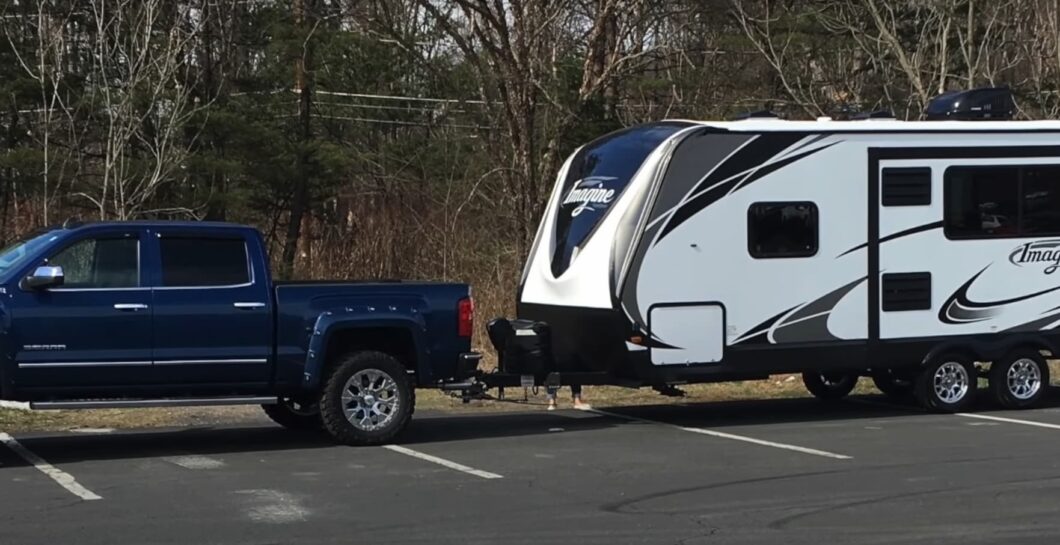
What vehicles can be flat towed behind a motorhome?
In general, rear-wheel drive and manual gearboxes are suitable for flat towing automobiles. A four-wheel drive and a manual transfer case are also okay for towing. If you’re not sure whether your car can be flat towed, check the owner’s manual or contact the manufacturer.
Does towing damage an automatic transmission?
Towing an automatic transmission car behind a motorhome can damage the transmission. The transmission fluid will overheat and break down, leading to costly repairs. If you must tow an automatic transmission car, it’s best to do so with a dolly or trailer. This will take some of the weight off the drivetrain and help prevent damage to the transmission.
Does towing a car behind an RV put miles on it?
Towing a modern vehicle behind an RV does not add to the odometer.
To prevent adding miles, towing with a complete trailer will be required for an older car with a mechanical odometer. The main thing a driver needs to be concerned about is making wide turns so the towed vehicle’s tires do not rub against the sides of the RV.
